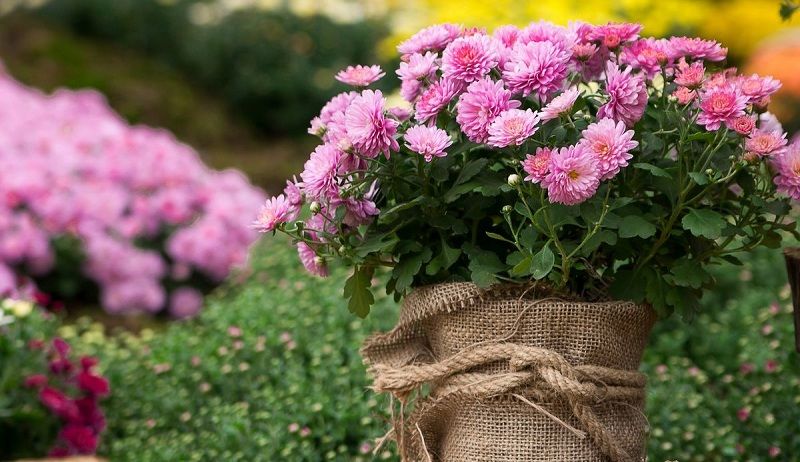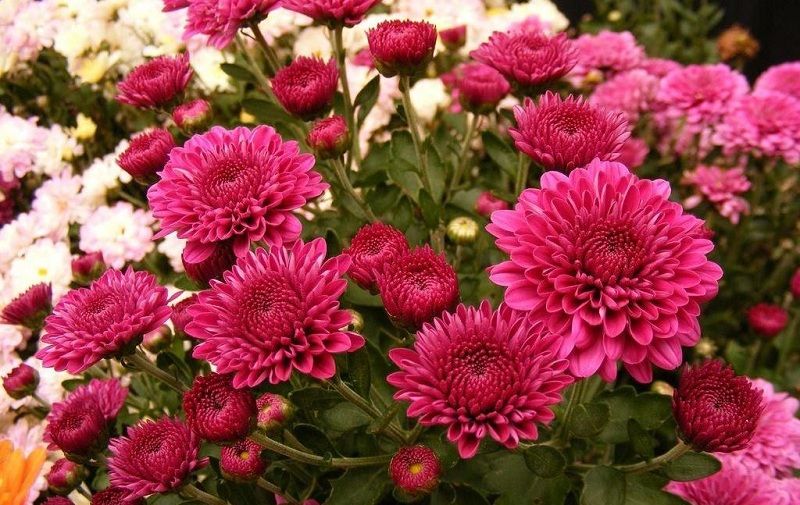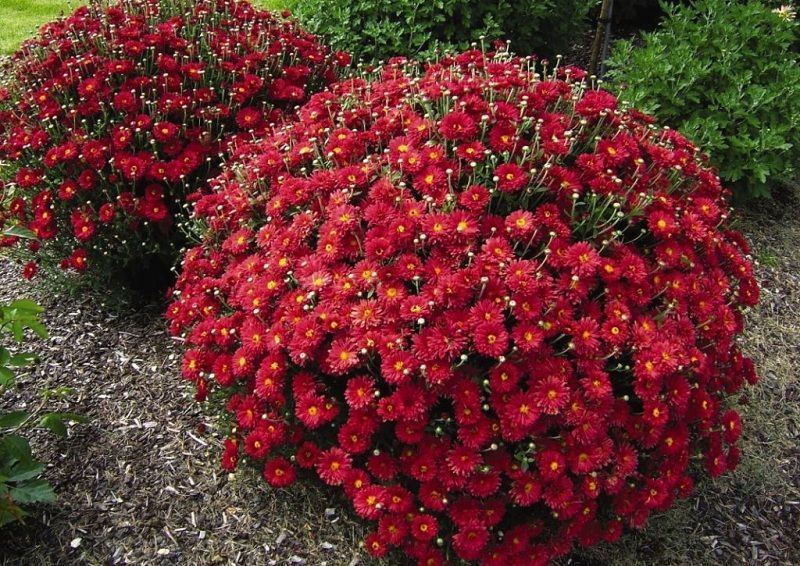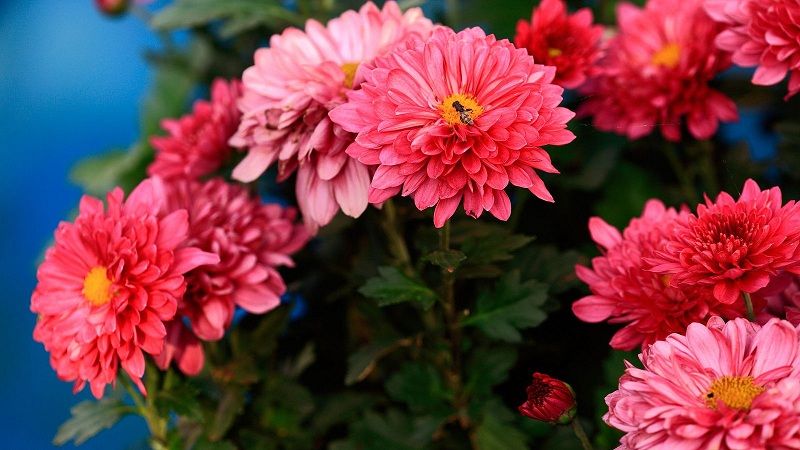
Chrysanthemums: Planting And Care In The Open Field
Gorgeous bushes of perennial garden chrysanthemums will decorate any personal plot and ornamental garden. These unpretentious flowers please flower growers with a delicate aroma and colorful flowering from late summer until the onset of cold weather. Fragrant flowering bushes can make expressive, not only a personal plot but also the life of a gardener engaged in the cultivation of ornamental plants.
“The Queen of Autumn” – this is how sophisticated breeders and flower growers who like variegated colors and luxurious forms speak of these amazingly beautiful flowers. Today in the article we will get acquainted with the varieties of perennial garden chrysanthemums, as well as reveal some secrets and peculiarities of care for colorful plants. By adhering to some rules for growing these amazing flowers, you can enjoy their lush flowering every year.
Breeding methods
There are two types of chrysanthemum:
- Annual, grown from seeds;
- Perennial, which reproduce not only seeds, but also cuttings, queen cells, and even division of the bush.
When growing seedlings in different ways, pay attention to the following features of each of them:
- Growing seeds implies sowing seed in open ground in mid-May and pinching after sprouting up to 10 cm in height. In early autumn, the plant can already please you with lush flowering.
- The most popular method of breeding chrysanthemums is grafting. In this way you can grow a bush of flowers, even cutting off the stalk from the bouquet. An escape, whose length is not less than 6 cm, is rooted in sand and peat ground and covered with a box or bucket. After the appearance of the first roots, rooted shoots are planted in separate pots, and with the establishment of good weather, they are transplanted into open ground.
- Spring reproduction of chrysanthemums can be produced and rhizomes of mature plants that overwintered in the ground, the so-called “queen trees”. When the soil is sufficiently heated, the queen cells, from which new shoots will later flow, are planted in the allotted space and covered with a thick cloth or wooden box for several days.
- When planting chrysanthemums in autumn, the division of the bush can be considered the most optimal way. Faded bush is dug, trying not to damage the rhizome with shoots, and with the help of a secateurs, it is divided into several parts. For the rejuvenation of plants, such a procedure is recommended to be carried out every two to three years.
Cuttings and queen cells best take root in the spring, and for autumn breeding, you should choose the method of dividing the bush.
Features planting plants
In order for flowers to take root faster in a new place and later began to flowering heavily, some features of the landing should be taken into account:
- In a previously prepared place at a distance of 30-50 cm from each other, make not too large indentations.
- A few days before planting, add half a pound of hummus or compost to each well. Try not to overdo it with fertilizer; otherwise, in the future, the foliage of chrysanthemums will be lush, and the flowers – small and dull.
- Planted cuttings sprinkle with soil, compact it, and cover with spun bond on top.
- When planting plants by dividing the bush for better development of the root system, cut the flowers and the upper part of the stems.
Subtleties care for perennial chrysanthemum
Although chrysanthemums are considered picky plants, they also require compliance with some rules of care:
Watering. Flower bushes cannot stand the stagnation of moisture, however, and without a sufficient amount of water the flowers become shallow, the stems become hard, and the foliage dries out. Moisturize the soil at the root (rather than pour rain!) Best of all settled water, followed by loosening in order to avoid the formation of a dense earthy crust.
Top dressing. With the establishment of a positive temperature, feed the plant with nitrogen fertilizer. Planted shoots and cuttings are best fertilized a few weeks after planting. At the end of July – the beginning of August, when the buds begin to appear, apply phosphate-potassium fertilizers to ensure lush flowering. After flowering, feed the bushes with organic matter – this will strengthen the plants before wintering. To prevent fragile stems from breaking by gusting winds, tie tall bushes with fabric tape or soft wire.
Trimming and shelter for the winter. With the advent of the first frost, cut the chrysanthemum trunks, leaving processes no longer than 10 cm. Warm the rhizome with sawdust or dry foliage. The most fastidious varieties of plants for the winter can be dug up and stored in the wooden boxes in a cool cellar.
The formation of a spherical bush. To get a flowering bush of an even spherical shape, it is necessary to cut and pinch it in spring. Some varieties of chrysanthemums immediately grow in the form of a ball with a height of no more than 20 cm (multiflora variety) and do not need additional pruning.
Pests and diseases. If the bushes are too dense and with improper care, chrysanthemums can be affected by fungal diseases:
- Gray decay (first, the foliage and stems are covered with abundant brown spots, and then gray fuzz is formed at the lesion sites, which provokes rotting and flowers fading);
- Powdery mildew (whitish plaque, abundantly covering leaves, shoots, and buds with flowers provokes their wilting);
- Rust (all ground part of the plant is affected by brown spots);
- Verticality wilting (entering through the root system, the fungus infects the leaves, which quickly turn yellow and fall off).
Pathogens from the affected plant can be removed with chemicals containing copper, as well as soap emulsion and colloidal sulfur solution.
If the chrysanthemum bushes are slightly damaged by pests (aphids), remove the affected leaves and twigs. If the aphid has covered a large part of the plant, then it is more expedient to treat it entirely with a mixture of aktellika or aktar, adding ordinary soap. You can get rid of the meadow bug and its larvae by treating the shrub with a solution of baby shampoo (1.5 spoons per 10 liters of water).
In the care of garden chrysanthemum, nothing is too complicated and impracticable. Even an inexperienced beginner gardener will be able to cope with this task. The main thing is to maintain consistency in the process of planting and care – and then the plant will delight you for a long time with its wonderful aroma and magnificent flowering.













